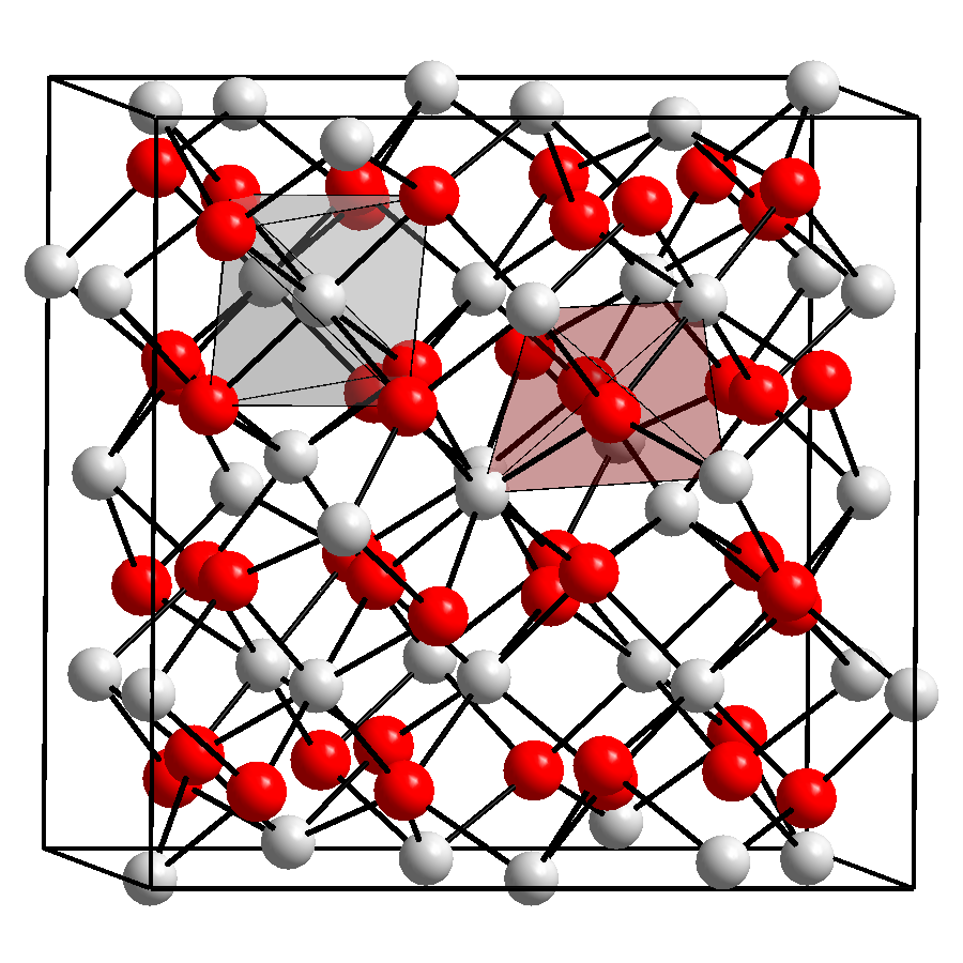local structure on:
[Wikipedia]
[Google]
[Amazon]
 The local structure is a term in
The local structure is a term in
 The local structure is a term in
The local structure is a term in nuclear spectroscopy Nuclear spectroscopy is a superordinate concept of methods that uses properties of a nucleus to probe material properties. By emission or absorption of radiation from the nucleus information of the local structure is obtained, as an interaction of ...
that refers to the structure of the nearest neighbours around an atom in crystal
A crystal or crystalline solid is a solid material whose constituents (such as atoms, molecules, or ions) are arranged in a highly ordered microscopic structure, forming a crystal lattice that extends in all directions. In addition, macros ...
s and molecule
A molecule is a group of two or more atoms held together by attractive forces known as chemical bonds; depending on context, the term may or may not include ions which satisfy this criterion. In quantum physics, organic chemistry, and bioch ...
s. E.g. in crystals the atoms order in a regular fashion on wide ranges to form even gigantic highly ordered crystals (Naica Mine
The Naica Mine of the Mexican state of Chihuahua, is a lead, zinc and silver mine. Located in Naica in the municipality of Saucillo, the Naica Mine is owned by Industrias Peñoles, the world's largest silver producer. Caverns discovered dur ...
). However, in reality, crystals are never perfect and have impurities or defects, which means that a foreign atom resides on a lattice site or in between lattice sites (interstitials). These small defects and impurities cannot be seen by methods such as X-ray diffraction
X-ray crystallography is the experimental science determining the atomic and molecular structure of a crystal, in which the crystalline structure causes a beam of incident X-rays to diffract into many specific directions. By measuring the angles ...
or neutron diffraction
Neutron diffraction or elastic neutron scattering is the application of neutron scattering to the determination of the atomic and/or magnetic structure of a material. A sample to be examined is placed in a beam of thermal or cold neutrons to o ...
, because these methods average in their nature of measurement over a large number of atoms and thus are insensitive to effects in local structure. Methods in nuclear spectroscopy use specific nuclei as probe. The nucleus of an atom
Every atom is composed of a nucleus and one or more electrons bound to the nucleus. The nucleus is made of one or more protons and a number of neutrons. Only the most common variety of hydrogen has no neutrons.
Every solid, liquid, gas, and ...
is about 10,000 to 150,000 times smaller than the atom itself. It experiences the electric fields
Electric Fields are an Aboriginal Australian electronic music duo made up of vocalist Zaachariaha Fielding and keyboard player and producer Michael Ross. Electric Fields combine modern electric-soul music with Aboriginal culture and sing in Pi ...
created by the atom's electrons that surround the nucleus. In addition, the electric fields created by neighbouring atoms also influence the fields that the nucleus experiences. The interactions between the nucleus and these fields are called hyperfine interactions
In atomic physics, hyperfine structure is defined by small shifts in otherwise degenerate energy levels and the resulting splittings in those energy levels of atoms, molecules, and ions, due to electromagnetic multipole interaction between the nucl ...
that influence the nucleus' properties. The nucleus therefore becomes very sensitive to small changes in its hyperfine structure, which can be measured by methods of nuclear spectroscopy, such as e.g. nuclear magnetic resonance
Nuclear magnetic resonance (NMR) is a physical phenomenon in which nuclei in a strong constant magnetic field are perturbed by a weak oscillating magnetic field (in the near field) and respond by producing an electromagnetic signal with a ...
, Mössbauer spectroscopy
Mössbauer spectroscopy is a spectroscopic technique based on the Mössbauer effect. This effect, discovered by Rudolf Mössbauer (sometimes written "Moessbauer", German: "Mößbauer") in 1958, consists of the nearly recoil-free emission and abso ...
, and perturbed angular correlation
The perturbed γ-γ angular correlation, PAC for short or PAC-Spectroscopy, is a method of nuclear solid-state physics with which magnetic and electric fields in crystal structures can be measured. In doing so, electrical field gradients and the L ...
.
With the same methods, the local magnetic fields in a crystal structure can also be probed and provide a magnetic local structure. This is of great importance for the understanding of defects in magnetic materials, which have wide range of applications such as modern magnetic materials or the giant magnetoresistance
Giant magnetoresistance (GMR) is a quantum mechanical magnetoresistance effect observed in multilayers composed of alternating ferromagnetic and non-magnetic conductive layers. The 2007 Nobel Prize in Physics was awarded to Albert Fert and Peter ...
effect, that is used in materials in the reader heads of harddrives.
Research of the local structure of materials has become an important tool for the understanding of properties especially in functional materials, such as used in electronics, chips, batteries, semiconductors, or solar cells. Many of those materials are defect materials and their specific properties are controlled by defects.
References
* Electrostatics Atomic physics Quantum chemistry Electric and magnetic fields in matter {{Quantum-chemistry-stub